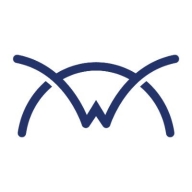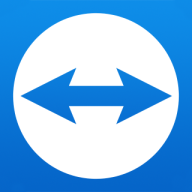


TeamViewer Business and ConnectWise ScreenConnect are top contenders in the remote access category. TeamViewer appears to have an edge with its superior cross-platform compatibility and usability, appealing to users needing speed and stability, while ConnectWise is noted for its consistent connection quality.
Features: TeamViewer offers robust cross-platform compatibility, firewall bypass capabilities, and a user-friendly interface with dual session management. It's known for features such as remote control and quick commands for efficient operations. ConnectWise provides persistent connections during network changes, excellent file transfer options, and meeting capabilities that enhance remote support scenarios.
Room for Improvement: TeamViewer can improve in session stability, issues with version interoperability, and feature parity across platforms like macOS and Linux. Enhancements in concurrent session management and clipboard management would be valuable. ConnectWise could streamline its setup processes, improve its reporting features, and address browser compatibility issues, particularly with Chrome devices.
Ease of Deployment and Customer Service: TeamViewer excels in ease of installation and deployment across different environments, with high customer satisfaction in its support responsiveness. Many users find it simple enough to rarely need assistance. ConnectWise supports varied deployment types but is criticized for initial setup complexities, although its reliability minimizes the need for support.
Pricing and ROI: TeamViewer offers various pricing models including a free version, but the costliness relative to usage can be a concern. It yields quick ROI through time and travel savings. ConnectWise ScreenConnect stands out with its affordability and simple licensing structure, offering substantial value for money, though more advanced features are less common at higher price ranges.
Everything we've gained from it makes my job easier day after day, and I see value in it as an engineer.
Microsoft Intune not only saves costs by reducing the number of personnel needed but also offers a comprehensive solution for managing laptops, applications, security, individual access, and enrollment.
Importantly, when someone leaves the company, it helps protect document access on their devices.
When a support ticket is submitted, it directly reaches someone with Intune support expertise.
When I contacted Microsoft, they had the same expertise, if not more, which is phenomenal because I felt heard and my problem was solved.
Sometimes, the support provided is excellent, and the representative is knowledgeable, while other times, the service needs improvement.
The scalability of Microsoft Intune is ten out of ten.
Ideally, we want to automatically segregate devices based on user properties like primary use, but currently, dynamic groups seem limited to device properties.
It supports organizations with 200 endpoints and those with more than 15,000 endpoints.
We have not experienced downtime, bugs, or glitches.
It appears Microsoft Intune undergoes changes without informing customers.
Microsoft Intune has been very stable.
Features like unlocking devices sometimes fail, and the support offered for other operating systems is insufficient.
There are communication issues, so you might start working with a feature without knowing if it will be deprecated six months from now.
Many third-party companies offer single-pane-of-glass reporting that shows you what your update environment looks like, how your patch is doing, application status, etc., but Intune's reporting is not intuitive.
Introductory professional services, like a fast-track service, were included with our E5 membership, and there have been no additional costs.
The Intune suite and add-ons, such as batch management and remote help, are costly.
It costs approximately forty euros per user per month.
Intune excels in configuration and compliance management for Windows 10, ensuring devices receive timely updates and adhere to organizational standards.
Dynamic groups allow us to set conditions for automatic membership, eliminating the need for user intervention or manual review and ensuring a seamless workflow.
Windows Autopatch is the most valuable because it removes the burden of patch management.
| Product | Market Share (%) |
|---|---|
| Microsoft Intune | 9.7% |
| TeamViewer Business | 11.1% |
| ConnectWise ScreenConnect | 1.7% |
| Other | 77.5% |



| Company Size | Count |
|---|---|
| Small Business | 116 |
| Midsize Enterprise | 46 |
| Large Enterprise | 152 |
| Company Size | Count |
|---|---|
| Small Business | 15 |
| Midsize Enterprise | 6 |
| Large Enterprise | 7 |
| Company Size | Count |
|---|---|
| Small Business | 38 |
| Midsize Enterprise | 29 |
| Large Enterprise | 26 |
Microsoft Intune provides centralized management of mobile devices and applications, ensuring security, compliance, and productivity through integration with Microsoft services like Microsoft 365 and Azure Active Directory.
Organizations use Intune for managing mobile devices and applications, enhancing security and compliance across platforms. With features like single sign-on, conditional access, and zero-touch deployment via Autopilot, it facilitates efficient operations. Intune's scalability, easy enrollment, and capabilities such as remote wipe support diverse device management, offering robust data protection and efficient operation. Despite its features, improvement areas include reporting, compatibility with non-Microsoft devices, and better support for macOS and Linux devices.
What are the key features of Microsoft Intune?
What benefits should users look for in reviews?
In industries such as finance, healthcare, and education, Microsoft Intune is implemented to ensure secure and compliant device management. Companies leverage its capabilities to deploy security policies and manage both corporate-owned and BYOD environments, facilitating a unified approach to data protection and compliance.
With ConnectWise ScreenConnect, you can seamlessly connect to desktops, mobile devices, and more, ensuring that customer downtime is a thing of the past. With world-class security features, including AES-256 encryption and two-factor authentication, ConnectWise ScreenConnect is ready to safeguard your interactions right out of the box. What sets ConnectWise ScreenConnect apart is the power of customization – white-label your software with hundreds of appearance options to showcase your unique brand in every support interaction. In the ScreenConnect Support Premium edition, experience ConnectWise View, enabling live stream sessions for real-time hardware troubleshooting via the user's mobile device camera. Plus, with our robust configurability and granular permissions, you can tailor the experience to your exact needs, equipping your team with the precise access they require.
TeamViewer Business offers seamless remote access with its cross-platform compatibility, robust security features, and user-friendly interface, making it ideal for technical support and remote collaboration in distributed environments.
TeamViewer Business is a powerful tool for remote access and technical support, valued for its ability to bypass firewalls and swift connections. It supports multiple operating systems like Windows, Mac, and Linux, facilitating access to servers and end-user machines. The tool is vital for help desks and IT departments, enabling technicians to control computers for troubleshooting, software installations, upgrades, and employee training. Although there are challenges with integration, backward compatibility, and stability with iOS devices, its efficient performance and remote control capabilities simplify tasks, especially for non-technical users.
What are the key features of TeamViewer Business?In various industries, TeamViewer Business plays a crucial role in managing distributed environments. It's essential for help desks handling remote problem-solving and employee training. Its ability to bypass firewalls and support cross-platform compatibility makes it a preferred choice for organizations needing to control devices across operating systems, simplifying IT management and technical support.
We monitor all Remote Access reviews to prevent fraudulent reviews and keep review quality high. We do not post reviews by company employees or direct competitors. We validate each review for authenticity via cross-reference with LinkedIn, and personal follow-up with the reviewer when necessary.